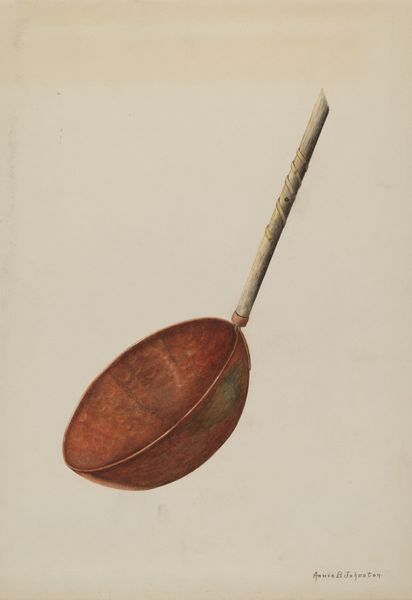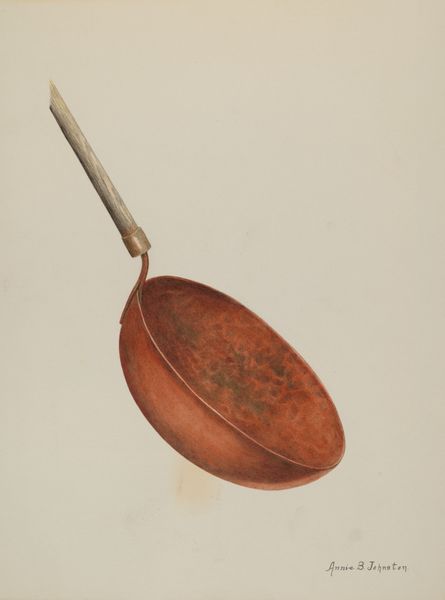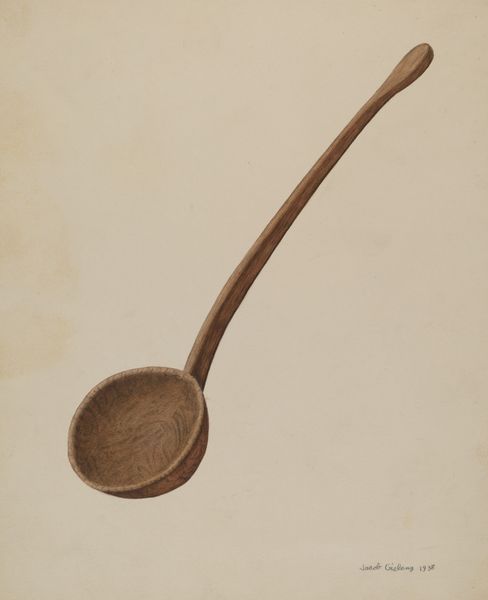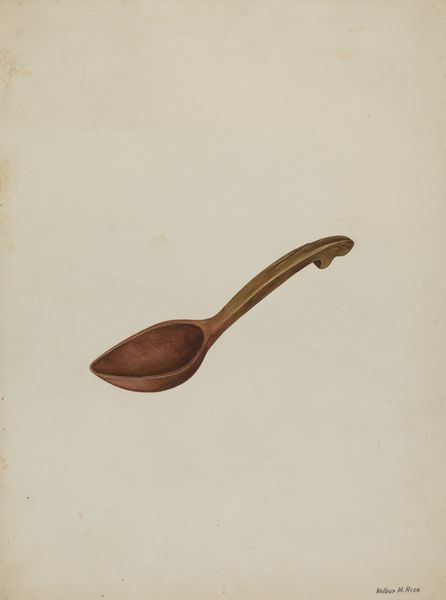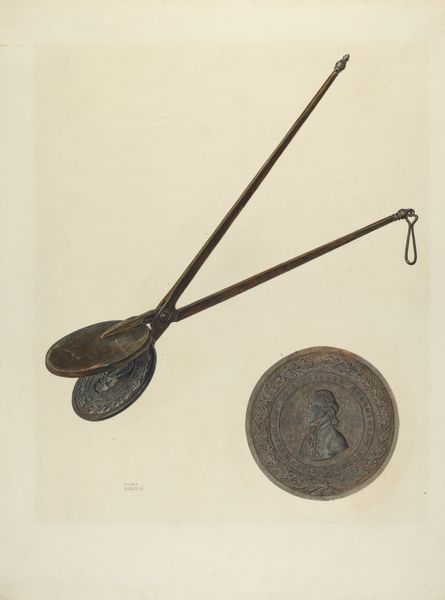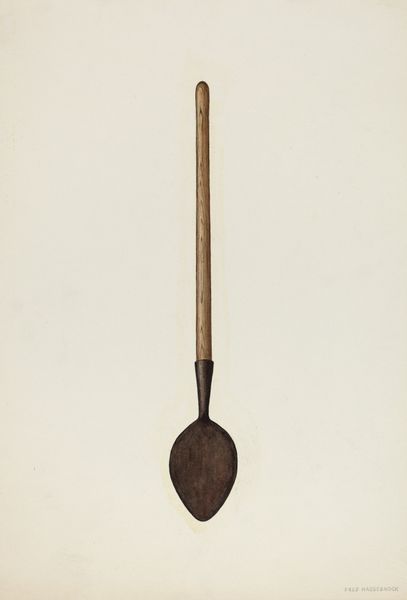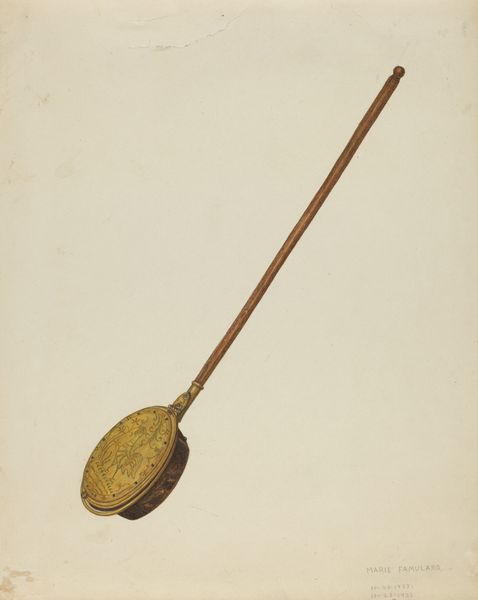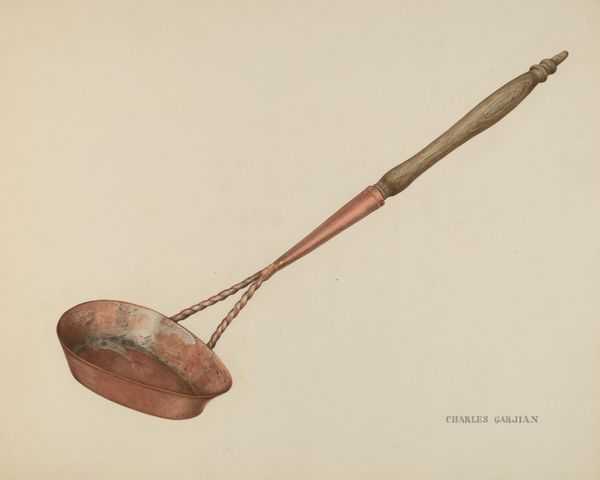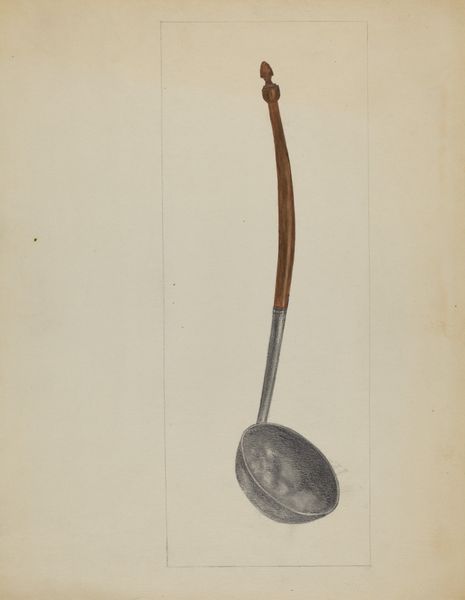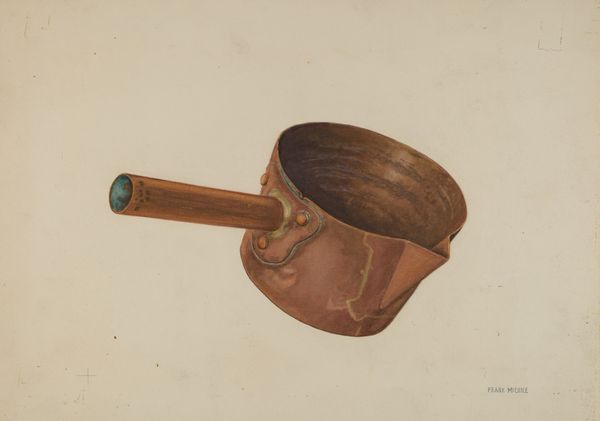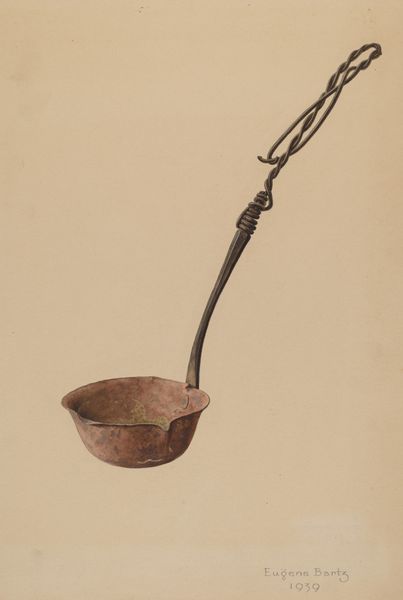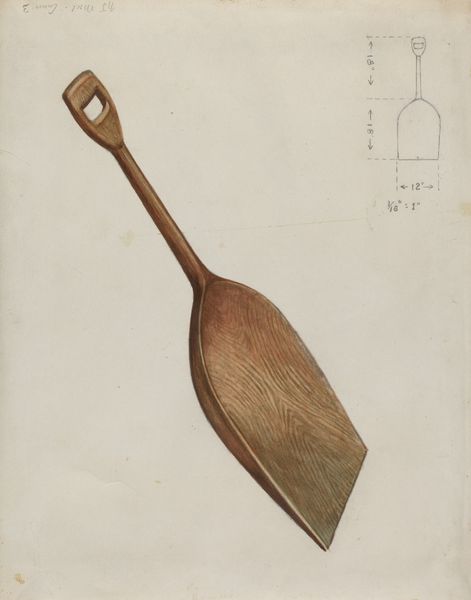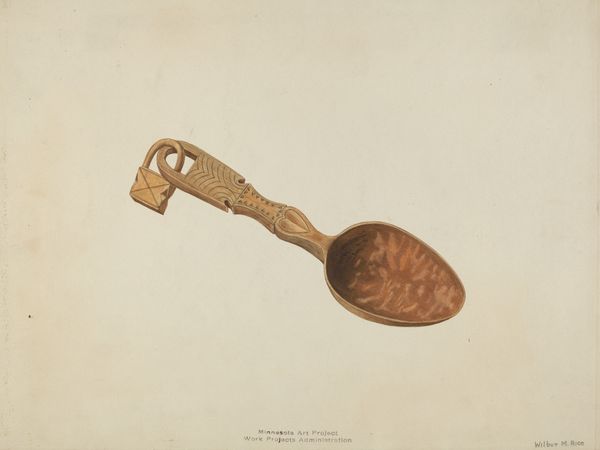
drawing, watercolor
#
drawing
#
watercolor
#
realism
Dimensions: overall: 35 x 24.5 cm (13 3/4 x 9 5/8 in.)
Copyright: National Gallery of Art: CC0 1.0
Curator: It's fascinating to me how humble objects can hold so much significance. Consider Annie B. Johnston's "Sugar Dipper," circa 1938, rendered in watercolor and drawing. It’s so beautifully understated. Editor: There’s something rather melancholic about it, actually. The muted tones and the almost clinical presentation… it’s stark. Is it simply the study of a tool? Curator: I believe there's more. Look at the composition. A single, everyday utensil given so much focus. These dippers, often made of copper or tin, were essential for preserving and processing food, especially in rural communities. This wasn’t simply an artistic exercise; it reflected Johnston's commitment to documenting regional material culture. Editor: So you are saying it functioned more as an archival impulse than art-making. How the act of depicting domestic objects helped visualize a certain historical and geographical point, the cultural heritage perhaps, that it embodied? I suppose these utilitarian objects aren’t just tools; they are silent witnesses to the labor and lives of people, often women. Curator: Exactly! And Johnston’s choice of media—watercolor and drawing—speaks to the accessibility and perhaps even the collaborative nature of artistic production at that time. Art wasn't confined to oils and canvas. This dipper represents a specific kind of labor, and its depiction involves accessible means and readily available techniques of crafting an image of it. Editor: Interesting, it also could reflect the economy during the late 30’s, following the great depression when frugality influenced all classes in terms of art production and the aesthetics of the artworks. But ultimately it raises questions about the hierarchies of art. Who gets to be represented and through which media? Curator: Absolutely. It’s a dialogue about value—both monetary and cultural—that continues today. The drawing brings to light questions on how things were made available, used and given agency by humans during hard times in specific rural contexts. Editor: It definitely makes you think about all that's involved when someone uses “material” to define culture and memory. Curator: Yes, It’s all entangled here! Editor: Entangled, indeed. It’s quite striking to think about.
Comments
No comments
Be the first to comment and join the conversation on the ultimate creative platform.
